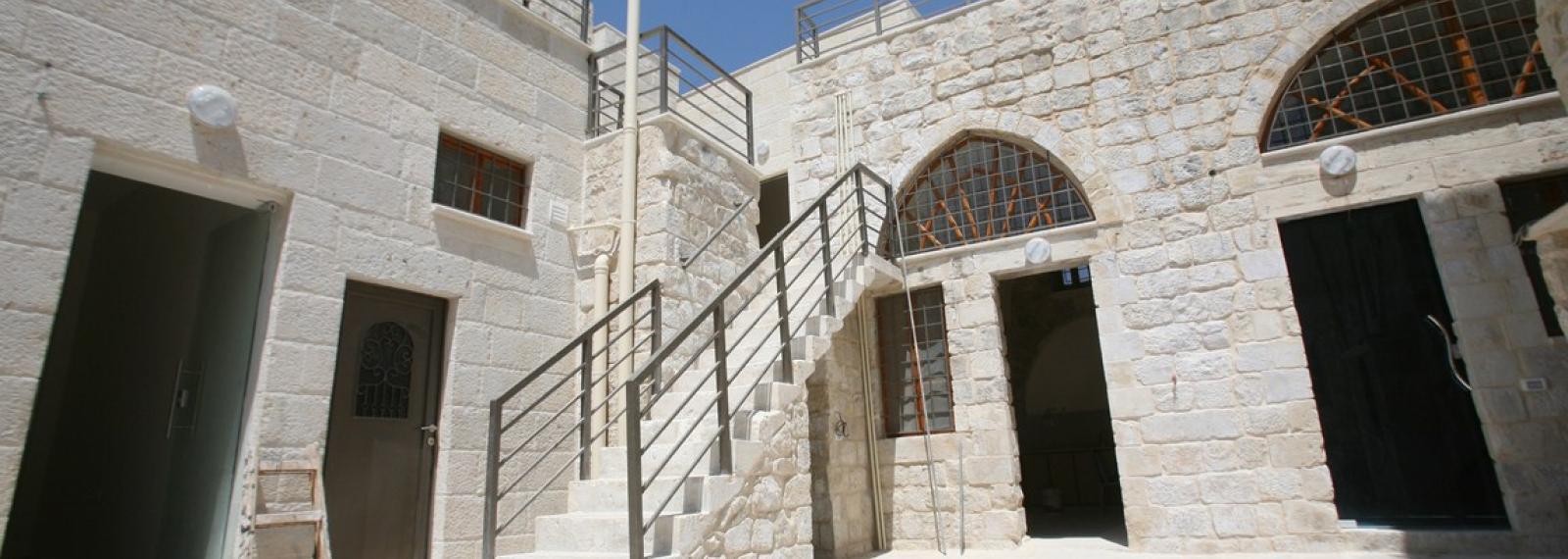Sharaf Building

Located at the center of the Old City of Nablus in Salahi Street, the two-storey abandoned and physically deteriorated building was restored and rehabilitated The Sharaf building is located in Harat al-Yasmeeneh, near Masjid al-Satoon at the north-western side of the Old City in Nablus.There is inadequate information about the historical period of the building’s establishment, but we know that it was originally used to house many families. However, from the survey and the site analysis it could be said that it dates back to the late Ottoman period and is over one hundred years of age. This can be clearly seen from the arches, facades and other architectural elements in the building.Nablus Municipality has recently bought the Sharaf building for public benefit. After the completion of its restoration and rehabilitation a few months ago, the municipality is preparing to utilize this building as a centre for cultural and social activities. At present, part of the building is used as a clinic.The building consists of three floors distributed on various levels. The ground floor is located at street level and has two barrel vaulted rooms that were discovered during restoration works. The first floor consists of four large cross vaulted rooms, two open yards to be used for cultural activities, and three service rooms and one big room that were added in the mid-late 20th century. The second floor has two big modern rooms reconstructed during the recent restoration works on the remains of the older structures. The building was left unoccupied for many years causing poor physical condition of many of its parts. In 2002, during the invasion into Nablus’ old city, many vaults and outer walls were damaged due to the bombing of the structures. It was also noted that more problems were found, like leaking of rain water through the walls, causing increased moisture and salts. The absence of natural ventilation, as well as plants’ growth on the facades, that badly affected the historical value of the building. Major restoration and rehabilitation works were carried out in the building in 2010 including improvement of the electricity and sewage system and connecting them with the public network, re-plastering the old rooms using traditional lime mortar and tiling the floors and the passage ways leading to the place. It could be said that most of the building’s original value and shape was restored, in addition to adapting it to a new use that will benefit residents in the old city. to fit its new function, as the location for the Technical Office for the Restoration Unit and the office of the Local Committee of Nablus Governorate. The work included restoration of the internal spaces, protecting the original geometric colored tiles and replacing the damaged tiles by new ones of traditional design. Most of the wooden work, including screens, mashrabiyyat and original windows, were restored and maintained. The work also included cleaning of the stone facades re-pointing and installing new sanitary facilities.




